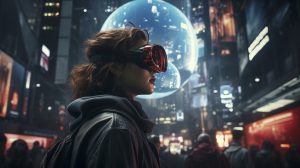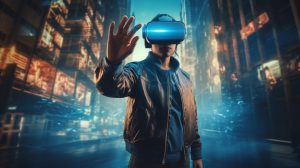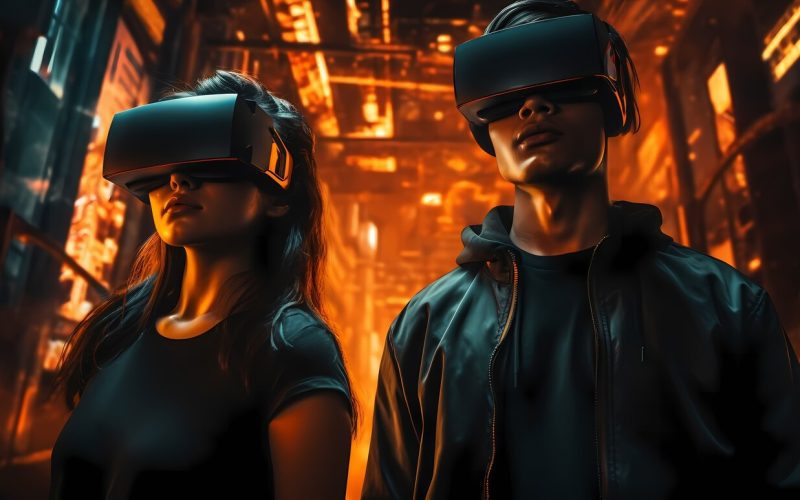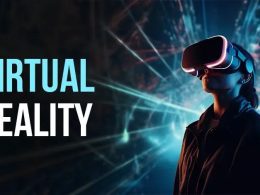Introduction
In the ever-evolving landscape of technology, Augmented Reality (AR) has emerged as a groundbreaking tool, reshaping various industries from gaming to education. Among these, the film industry stands as a prominent beneficiary, leveraging AR to enhance storytelling in unprecedented ways. This article delves into the realm of Augmented Reality Storytelling, examining its potential, current applications, and future prospects in the cinematic world.
Understanding Augmented Reality Storytelling

Augmented Reality (AR) refers to the integration of digital information with the user’s environment in real-time. Unlike Virtual Reality (VR), which creates a completely artificial environment, AR overlays digital elements onto the real world, enhancing the user’s perception and interaction with their surroundings. When applied to storytelling, AR opens up new dimensions of narrative immersion and interaction.
The Evolution of Storytelling in Film

Storytelling has always been at the heart of film, evolving from silent movies to talkies, black-and-white to color, and more recently, 3D and VR. Each technological advancement has brought audiences closer to the story, making the experience more immersive. Augmented Reality Storytelling represents the next leap, allowing filmmakers to blend real-world environments with digital narratives seamlessly.
Enhancing Viewer Engagement

One of the most significant advantages of Augmented Reality Storytelling is its ability to enhance viewer engagement. Traditional films offer a passive viewing experience, where audiences watch the story unfold on screen. In contrast, AR allows viewers to interact with the narrative, becoming active participants rather than mere spectators.
-
Interactive Story Elements
Imagine watching a mystery film where clues are hidden in your living room or a historical drama where you can explore ancient ruins from the comfort of your home. AR enables filmmakers to create interactive story elements that viewers can engage with, adding a layer of depth to the narrative.
-
Personalized Experiences
AR also allows for personalized storytelling experiences. By leveraging data such as user preferences and behaviors, filmmakers can tailor the narrative to each viewer, creating a unique and personalized journey. This level of customization not only enhances engagement but also fosters a deeper emotional connection with the story.
Current Applications in Film

While Augmented Reality Storytelling is still in its nascent stages, there are already several noteworthy applications in the film industry.
-
AR Trailers and Promotions
Movie trailers and promotions are prime candidates for AR integration. Studios can create AR experiences that bring movie posters to life, allowing viewers to interact with characters and scenes from the film. This not only generates excitement but also provides a glimpse of the immersive experience that awaits.
-
Augmented Reality Short Films
Several filmmakers have experimented with AR short films, where viewers use their smartphones or AR glasses to experience the story. These films often blend real-world environments with digital characters and objects, creating a unique and immersive narrative.
-
AR-enhanced Home Viewing
Streaming platforms and home entertainment systems are also exploring AR integration. Viewers can use AR devices to access additional content, such as behind-the-scenes footage, character backstories, and interactive maps, enhancing the overall viewing experience.
The Future of Augmented Reality Storytelling

The potential of Augmented Reality Storytelling in film is vast, and as technology continues to advance, we can expect even more innovative applications.
-
AR Glasses and Wearable Devices
The development of AR glasses and other wearable devices will play a crucial role in the future of AR storytelling. These devices will provide a more seamless and immersive experience, allowing viewers to engage with the narrative without the need for a smartphone or tablet.
-
Real-time Interaction
Advancements in artificial intelligence and machine learning will enable real-time interaction within AR narratives. Viewers will be able to influence the story based on their actions and decisions, creating a truly dynamic and interactive experience.
-
Collaborative Storytelling
AR also opens up possibilities for collaborative storytelling, where multiple viewers can participate in the narrative simultaneously. This could lead to new forms of social and communal storytelling experiences, blurring the lines between audience and storyteller.
Challenges and Considerations

While the potential of augmented reality storytelling is immense, there are several challenges and considerations to address.
-
Technical Limitations
Current AR technology has limitations in terms of hardware capabilities and content creation. High-quality AR experiences require advanced devices and significant processing power, which may not be accessible to all viewers.
-
Content Creation
Creating compelling AR content requires a unique skill set, combining traditional filmmaking techniques with AR development. Filmmakers and content creators will need to adapt and learn new tools and methods to fully harness the potential of AR storytelling.
-
Audience Acceptance
As with any new technology, audience acceptance is crucial. Filmmakers must strike a balance between innovation and accessibility, ensuring that AR experiences enhance the story without overwhelming or alienating viewers.
Analysis Table: Key Benefits of AR Storytelling
| Benefit | Description |
| Enhanced Audience Engagement | AR allows viewers to interact with characters and environments, deepening their emotional connection to the story. |
| Immersive Experience | Blends the digital and physical worlds, making the viewer feel more involved in the narrative. |
| Creative Storytelling Techniques | AR offers filmmakers new tools to experiment with interactive, nonlinear, and multi-layered narratives. |
| Personalized Viewing | Audiences can explore extra content, choose different story paths, and interact with scenes at their own pace. |
| Expanded Marketing Opportunities | Studios can use AR to create buzz and engage audiences with interactive previews and experiences. |
Comparative Table: AR Storytelling vs. Traditional Film Storytelling
| Aspect | Traditional Film Storytelling | Augmented Reality Storytelling |
| Audience Interaction | Passive viewing experience, limited to observing the story. | Active participation, with viewers able to interact with characters and objects. |
| Immersive Experience | Limited to on-screen visuals and sound. | Blends digital elements with the physical world for a more immersive experience. |
| Story Structure | Linear, with a set narrative path. | Nonlinear, allowing multiple story paths and interactive layers. |
| Production Techniques | Visual effects added in post-production. | AR elements integrated during filming for real-time interaction. |
| Distribution | Delivered via theaters or streaming platforms. | Can be experienced anywhere using AR devices or apps. |
| Marketing | Traditional trailers, posters, and ads. | Interactive AR campaigns that engage audiences before release. |
Conclusion
Augmented Reality Storytelling represents a new frontier in film, offering unprecedented opportunities for narrative immersion and interaction. While there are challenges to overcome, the potential for creating unique and engaging cinematic experiences is immense. As technology continues to evolve, we can look forward to a future where AR becomes an integral part of storytelling, transforming the way we experience and engage with film.
In this dynamic and ever-changing landscape, one thing is certain: Augmented Reality Storytelling is poised to redefine the boundaries of cinematic storytelling, ushering in a new era of immersive and interactive narratives.












